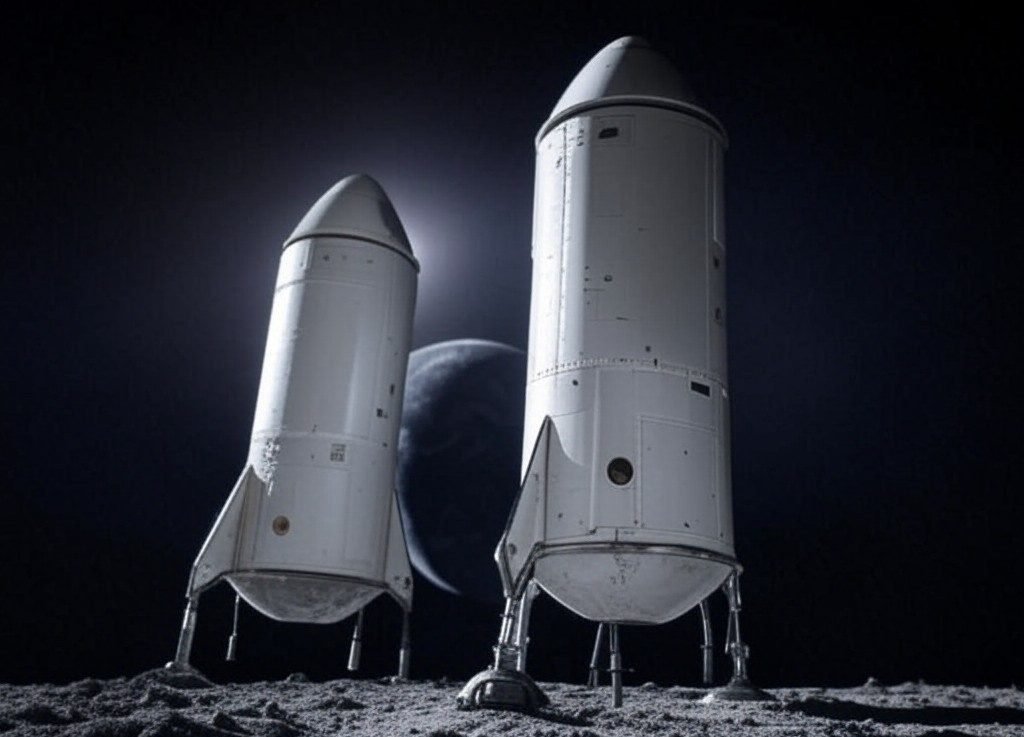Breaking New Ground: SpaceX’s Private Lunar Probes and Their Exploration Goals
In an exhilarating era of space exploration, private companies are making remarkable strides beyond Earth’s atmosphere. Recently, two commercial space probes embarked on a pioneering mission to the Moon, marking a significant milestone in lunar exploration. This venture exemplifies the growing involvement of private enterprises in space travel and raises intriguing questions about the future of lunar exploration.
The Launch: A Historic Moment
The launch of these two probes took place at Cape Canaveral in the early hours of January 15, precisely at 7:11 AM French time. Utilizing the Falcon 9 rocket, developed by SpaceX, this mission showcased the company’s cutting-edge technology and efficiency. Successfully placing the probes into trans-lunar orbit not only highlights SpaceX’s prowess but also reflects a new era of collaboration between commercial entities and government space agencies.
This mission features two distinct probes: the American probe, Blue Ghost, produced by Firefly Aerospace, and the Japanese probe, Hakuto-R Resilience, developed by the company ispace. The simultaneous launch of these probes signifies a remarkable instance of international teamwork aimed at achieving scientific and exploratory objectives.
Unpacking Blue Ghost’s Mission
Blue Ghost is part of NASA’s Commercial Lunar Payload Services (CLPS) initiative, which emphasizes collaboration with commercial partners for lunar exploration. This program aligns with NASA’s larger Artemis program, which aims to return humans to the Moon and establish a sustainable exploration framework by the end of the decade.
Designed to carry up to 150 kilograms of instruments and payloads, Blue Ghost is set to transport ten NASA instruments aimed at studying various aspects of the lunar surface. The probe is anticipated to land on March 2, near Mount Latreille in the Mare Crisium region, an area that is visible from Earth. The mission will last approximately 14 Earth days, concluding when night falls at the landing site.
Hakuto-R Resilience: A Second Chance
The second probe, Hakuto-R Resilience, signifies another crucial step for ispace following a setback earlier in 2023 when a previous probe did not succeed in its landing attempt. This time around, ispace is poised to achieve a landing between May and June at Mare Frigoris, also known as the Sea of Cold.
One of the standout features of this mission is the inclusion of a small rover named Tenacious, which weighs five kilograms and measures 21.26 inches in length. Developed by ispace’s European branch based in Luxembourg, Tenacious is equipped with a shovel designed to collect regolith samples from the Moon’s surface. This endeavor is particularly significant for Luxembourg, as it aims to take the lead in launching a lunar mining program.
The Implications of Private Lunar Exploration
The missions of Blue Ghost and Hakuto-R Resilience exemplify a burgeoning trend: the increasing role of private companies in lunar exploration, supported by initiatives such as NASA’s CLPS program. Previous attempts at lunar missions, including Astrobotic’s Peregrine and Intuitive Machines’ Odysseus, have set the stage for this new wave of exploration. While Peregrine faced challenges in reaching lunar orbit, Odysseus did manage to land, though it tipped over shortly after touchdown.
The involvement of private players like Firefly Aerospace and ispace signifies a transformative shift in space exploration, moving beyond the traditional realm of government agencies. By leveraging commercial capabilities, these missions not only aim for scientific accomplishments but also foster international collaboration and spark innovation within the industry.
Exploring New Frontiers: Why It Matters
The significance of these lunar missions extends beyond mere exploration; they represent humanity’s enduring quest for knowledge and understanding of the cosmos. Each successful mission not only pushes the boundaries of our technological capabilities but also opens new avenues for discovery, allowing us to unravel mysteries that lie beyond our home planet.
Moreover, the collaboration between private companies and governmental organizations is paving the way for a new paradigm in space exploration. As commercial entities continue to participate in ambitious projects, we can expect a surge in innovation, leading to advancements in technology and science that can benefit not only space exploration but also life on Earth.
Future Prospects in Lunar Exploration
As Blue Ghost and Hakuto-R Resilience progress toward their lunar destinations, they embody the spirit of exploration and the endless possibilities that lie ahead. With the ongoing evolution of space technology and the increasing involvement of private companies, the next decade promises to be a thrilling period for lunar exploration. The successful execution of these missions could stimulate further investment in lunar research and development, leading to more ambitious projects that could eventually establish a sustainable human presence on the Moon.
In conclusion, the recent missions undertaken by SpaceX and its commercial partners represent a pivotal moment in the history of lunar exploration. They signify a shift towards a more collaborative and innovative approach to understanding our celestial neighbor. As we stand on the brink of new discoveries, these missions remind us of the unquenchable human thirst for knowledge and the limitless potential of space exploration.




